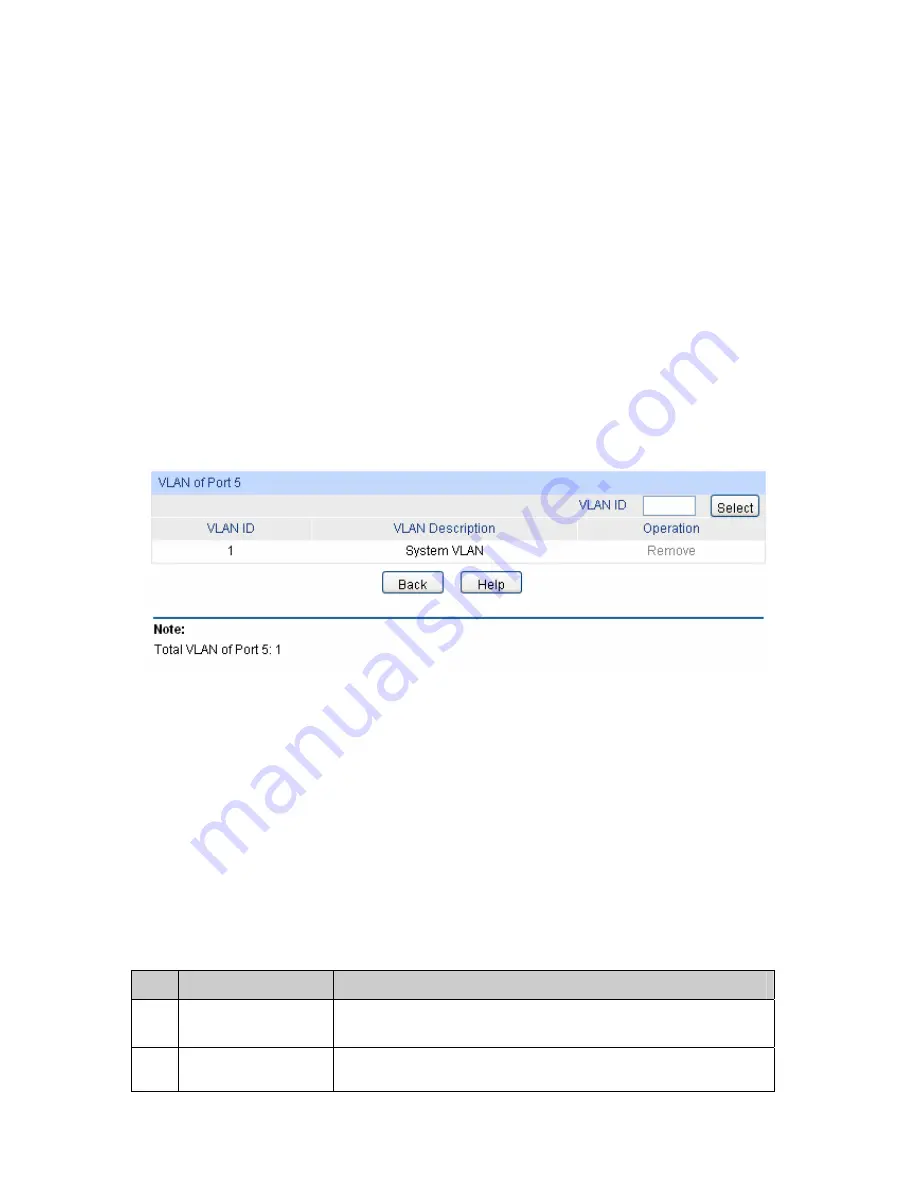
62
Link Type:
Select the Link Type from the pull-down list for the port.
•
ACCESS: The ACCESS port can be added in a single VLAN,
and the egress rule of the port is UNTAG. The PVID is same
as the current VLAN ID. If the current VLAN is deleted, the
PVID will be set to 1 by default.
•
TRUNK: The TRUNK port can be added in multiple VLANs,
and the egress rule of the port is TAG. The PVID can be set as
the VID number of any VLAN the port belongs to.
•
GENERAL: The GENERAL port can be added in multiple
VLANs and set various egress rules according to the different
VLANs. The default egress rule is UNTAG. The PVID can be
set as the VID number of any VLAN the port belongs to.
PVID:
Enter the PVID number of the port.
LAG:
Displays the LAG to which the port belongs.
VLAN:
Click the Detail button to view the information of the VLAN to
which the port belongs.
Click the
Detail
button to view the information of the corresponding VLAN
Figure 8-6 View the Current VLAN of Port
The following entries are displayed on this screen:
¾
VLAN of Port
VLAN ID Select:
Click the Select
button to quick-select the corresponding entry
based on the VLAN ID number you entered.
VLAN ID
:
Displays the ID number of VLAN.
VLAN Description:
Displays the user-defined description of VLAN.
Operation:
Allows you to remove the port from the current VLAN.
Configuration Procedure:
Step Operation
Description
1
Set the link type for
port.
Required. On the
VLAN
→
802.1Q VLAN
→
Port Config
page, set
the link type for the port basing on its connected device.
2
Create VLAN.
Required. On the
VLAN
→
802.1Q VLAN
→
VLAN Config
page,
click the Create button to create a VLAN. Enter the VLAN ID and






























